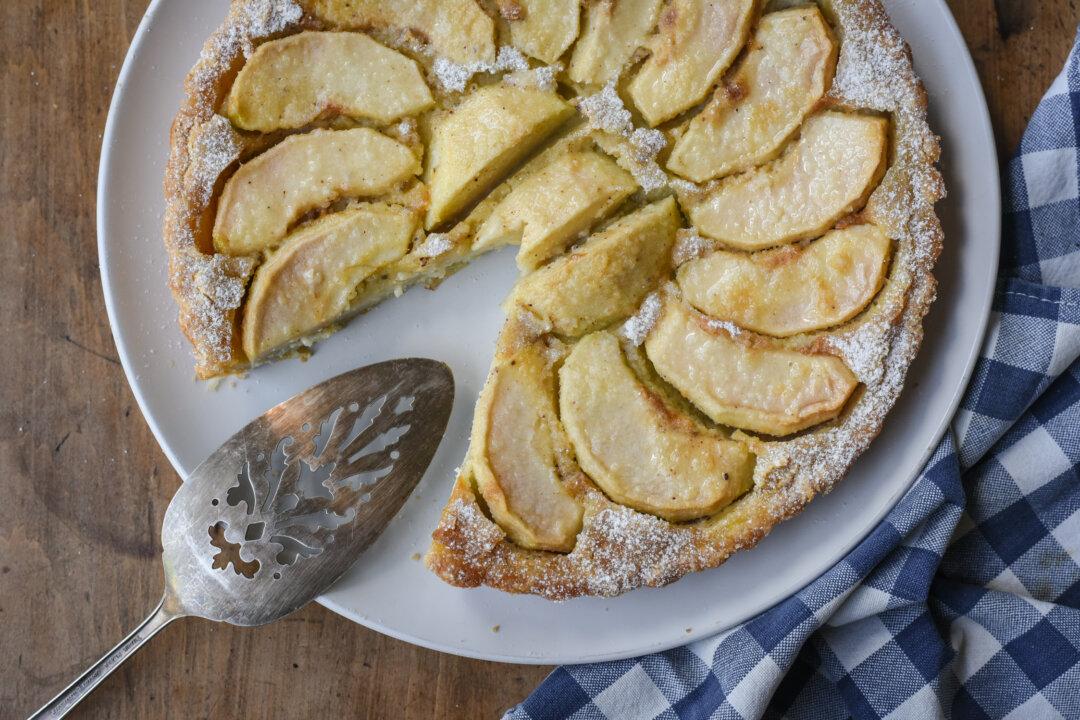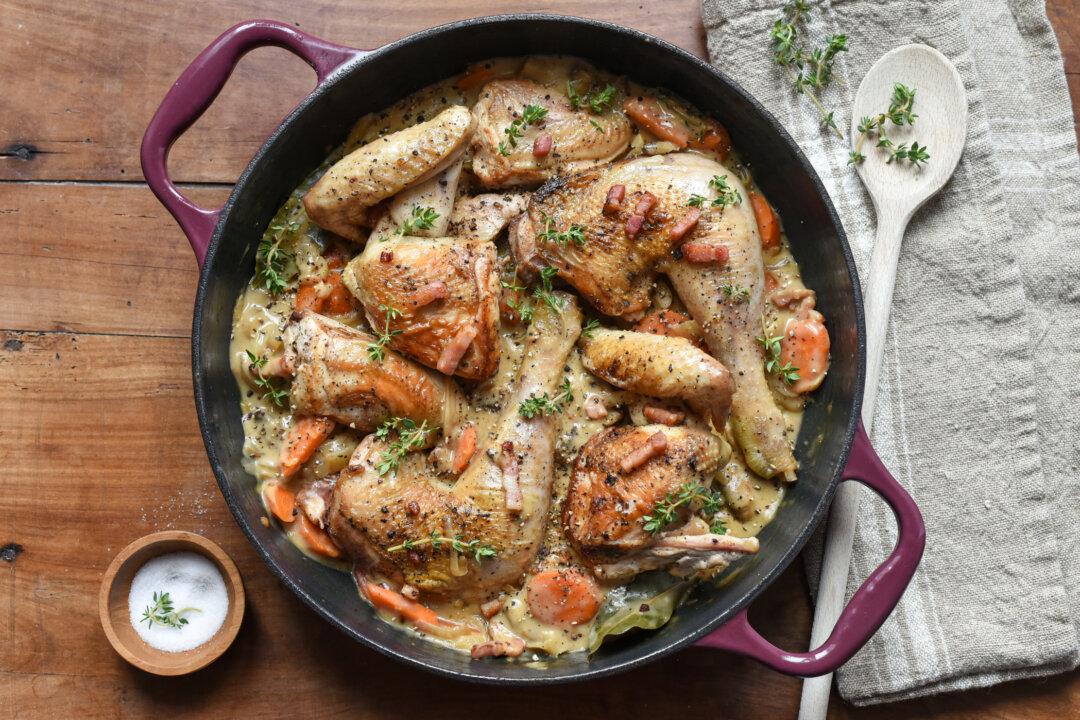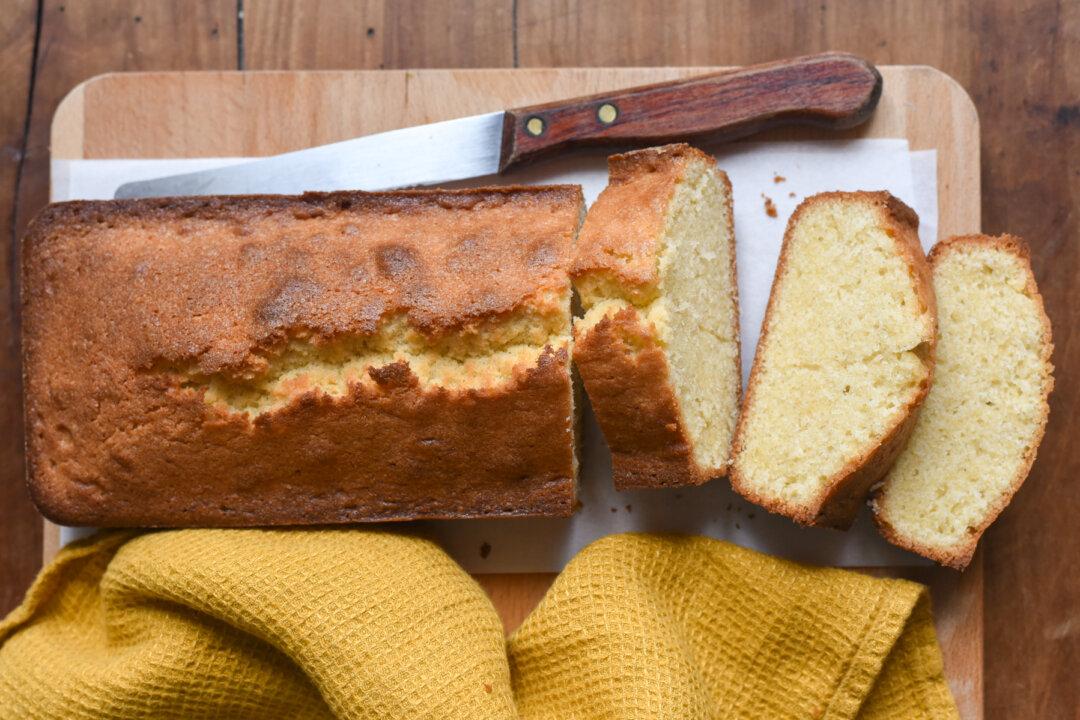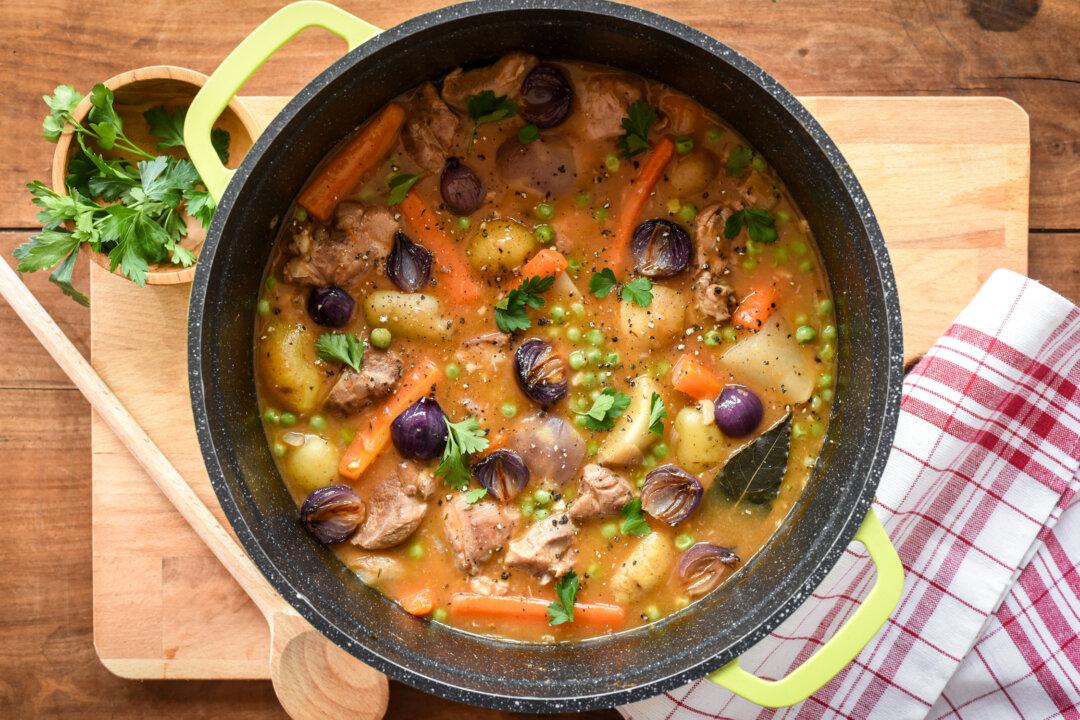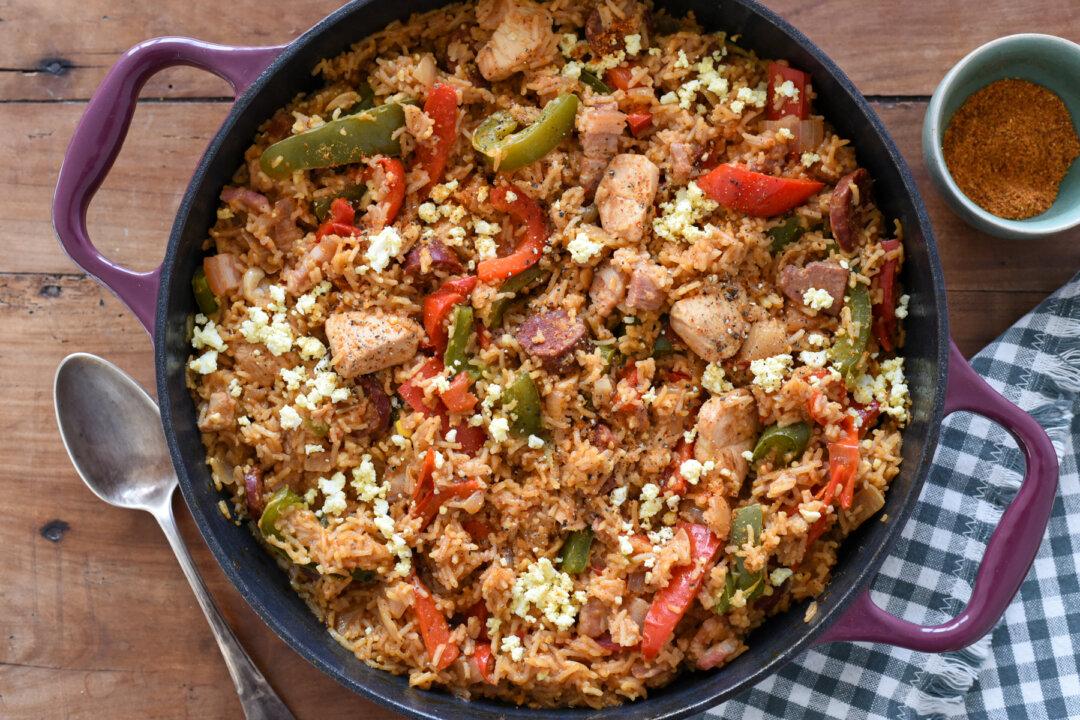Famous for its bucolic villages, lush apple orchards, and storied dairy farms, Normandy is a northern French region that produces exceptional apples, Calvados, butter, and crème fraîche—all of which collide in the delicious Tarte Normande.
This iconic regional dessert features a sandy, buttery crust filled with juicy apple wedges, nestled in a Calvados-infused custard. It’s an easy, rustic recipe for your baking repertoire, best made in the fall, when apples are in season.

